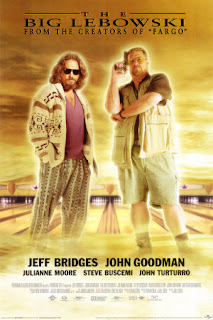 When I first moved to Southern California and would catch a flick at a Laemmle (SoCal’s premiere art-house theater chain) or at the Egyptian Theatre on Hollywood Boulevard (home to the American Cinematheque) I’d always see these bizarre, eclectic promos for something called KCRW mixed in with the coming attractions. And my Jersey-born brain would always scream WTF!? But, having now lived here for ten plus years, and considering myself somewhat in the know, I am proud to be a card-carrying member. And what those of us Angelenos in the know know is this: that KCRW is the greatest independent radio station on the face of planet Earth. And, thanks to the glories of the Internet, the station's vast array of content is available streaming and archived at www.kcrw.com for the whole world to enjoy.
When I first moved to Southern California and would catch a flick at a Laemmle (SoCal’s premiere art-house theater chain) or at the Egyptian Theatre on Hollywood Boulevard (home to the American Cinematheque) I’d always see these bizarre, eclectic promos for something called KCRW mixed in with the coming attractions. And my Jersey-born brain would always scream WTF!? But, having now lived here for ten plus years, and considering myself somewhat in the know, I am proud to be a card-carrying member. And what those of us Angelenos in the know know is this: that KCRW is the greatest independent radio station on the face of planet Earth. And, thanks to the glories of the Internet, the station's vast array of content is available streaming and archived at www.kcrw.com for the whole world to enjoy.“What’s this?” I hear you question. Why am I writing about some radio station on a film blog? Well, dear readers, 89.9 KCRW is no mere radio station. In its online incarnation KCRW is a veritable digital temple of aural greatness. In addition to offering NPR and BBC news coverage and unparalleled music programming (more on that later), the station produces a plethora of original pop culture-oriented series for listeners of every taste. For the film buff there’s (1) The Treatment - an insightful, in-depth, half-hour discussion with actors, directors and film artisans hosted by former New York Times film critic Elvis Mitchell, (2) The Business – a Hollywood insider look at show business hosted by The Hollywood Reporter’s Editor at Large, Kim Masters, (3) Film Reviews – by Pulitzer Prize-winning Wall Street Journal film critic Joe Morgenstern, (4) Martini Shot – writer/producer Rob Long’s often hysterical blog-style look at life in Hollywierd, and (5) Hollywood Breakdown – a condensed offshoot of The Business hosted by Kim Masters and Los Angeles Times reporter John Horn that efficiently dissects Tinseltown’s top stories. And, for those adventurous enough to journey out of Filmland, there’s also Bookworm (piercing literary conversations and author interviews), Design and Architecture, Good Food, the NPR staple: This American Life, and Le Show (actor/comedian Harry Shearer’s weekly radio circus), among others. Visit the site, peruse, and enjoy.
And about that music programming; if you’re a music buff, but detest being spoon fed by corporate radio, then KCRW is absolutely for you. It plays host to a treasure trove of cutting edge sounds and is a great place to discover new artists. Also, keep in mind that KCRW’s Los Angeles area listenership is filled with entertainment industry insiders. This station helps set the trends. Their flagship broadcast, Morning Becomes Eclectic, is, music wise, probably one of the most influential radio shows in the country. And, oh, what other riches abound! On their website you’ll find (1) Album Preview – where you can stream select new album releases in their entirety, (2) The Guest DJ Project – for which a wide variety of cultural figures, from filmmakers to celebrity chefs, highlight the music that has inspired them, and (3) Eclectic24 – a round the clock streaming music channel, plus all of their DJ-hosted radio programs featuring an incredible selection of hand picked music.
So, if you want to become an honorary Angeleno (outside of being a Lakers/Dodgers fan, though that looks a lot more like posing) without actually going through the trouble of moving to Southern California, not to mention being able to impress all of your friends when you seemingly “discover” every hip new musical act months and months before they’re on anyone else’s radar, becoming a regular KCRW listener is the fastest way to do so. The smorgasbord of free content will blow your mind! Go ahead, you can thank me now. All I would suggest, if you find yourself a fan and a regular listener, is that you make some kind of donation and become a card-carrying member too. As the government tries to rip funds from Public Radio (and I’m one who firmly believes that if an uncontrollable chunk of my tax dollars is going to go to bombs and weapon making and things that I don’t fully agree with, then a tiny chunk of it should go to something I actually benefit from on a daily basis) the least we can do is fork over a sliver of our income to keep this truly unique mecca of cultural diversity alive and flourishing. Yeah, it sounds like a pitch, a shameless plug… whatever. I write this out of deep love for my radio station, baby, nothing more. Power to the people! Please spread the word.

















































